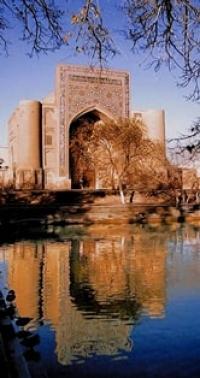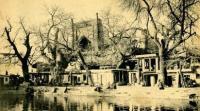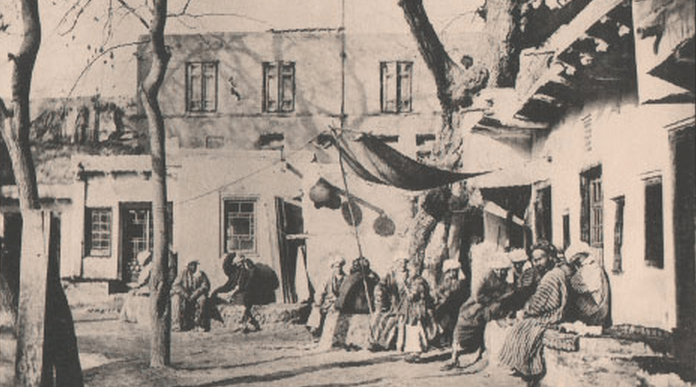You are here
Lyabi House in Bukhara.


Excursions in Bukhara.
«Memory is the treasure house of the mind wherein the monuments thereof are kept and preserved»
Thomas Fuller.
An Bukhara Silk Road Destination.
Beneath the Taq-i-Sarrafan and parallel to the street runs a narrow canal born of malice and high-handed intent. Around 1620 the khan's grand vizier, Nadir Divanbegi, wants to put a reservoir in the city centre on the site of the house of a lonely old woman. refused to move so he had a canal built under her house, dissolving its mud foundation and walls.
The pool's sides were stepped, as usual for a khauz, to let people get at the water whatever its level. Nowadays the water is for gazing at, not washing in. Around it, under century-old plane trees, shashlyk, plov and chaizre served all day to a core clientele of turbanned neo-dervishe-and to others who are patient.
Not content with his pool, the grand vizier flanked it with two grand buildings in his own memory, the Nadir Divanbegi madrasa and khanaga, both completed around 1620. The madrasa was originally intended to be a caravanserai but the khan inaugarated it, probably by mistake, as a madrasa. Nothing the khan said could be unsaid so it was hastily converted.
It has a barber's shop and cafe in its south wing, a bureau de change to the left of the pishtak on the inside, and a very striking mosaic above the entrance arch. The sun, with a Mongol face like those behind the lions of Samarkand's Sher Dor madrasa, illuminates two dazzling if strangely hybrid birds, each sheltering a grazing goat.
All that remained of the mosaic in 1970 was a faint imprint from which it has been completely restored. The khanaga on the opposite (west) side of the pool was once a hostel for wandering dervishes but in Soviet times became an exhibition hall.
Now almost everything on show is for sale. Between the pool and the madrasa, in the middle of a small formal garden, there is a modern statue commemorating the 1000th birthday of an ancient 'wise fool'- Khodja Nasreddin was a Robin Hood character who starred in countless Sufi children s stories and was loved by Soviet mythologists for his instinct for the redistribution of wealth by direct action.
The north side of the complex is formed by the Kukeldash madrasa (1568 - 1569), Bukhara's biggest and most austere, with 160 cells and a courtyard 80 by 60 m. The builder was Kulbaba Kukeldash, whose name means foster-brother of the Khan (Abdullah).
The decorative art of the era formed a sober interlude between the restrain opulence of Ulughbек and the flamboyance of the XVII century. This madrasa is said to be notable for its main cupola, supported by four intersecting arches, and the alabaster pointing on the ceilings of its octagonal corner halls.
It is said that when Nadir-Divan-Begi built a khanaka, on the site of the existing house there was a large household belonging to a widow - a Jewess. The sofa-run decided that this place is ideal for the device of the reservoir during the khanaka.
He addressed a widow with an offer to sell her yard for a good price. But a Jewess would never agree.

Authority:
V.G Saakov «History of Bukhara». Publishing house "Shark", 1996. «Bukhara. Masterpieces of the Central Asia». The historical guidebook across Bukhara. 2012. "Bukhoro. Bukhara" In the Uzbek, English and Russian languages. Publishing house "Uzbekistan", Tashkent 2000. Mukhammad Narkshakhi. History of Bukhara. Tashkent. 1897 (translator N.Lykoshina). V.G.Saakov "Architectural masterpieces of Bukhara. A Bukhara regional society "Kitabhon" Uzbek SSR, Exactly 1991 Robert Almeev. "History of ancient Bukhara". (Under edition of the Academician of the Academy of sciences of Republic Uzbekistan of Rtveladze E.V.).
Photos
Alexander Petrov.







